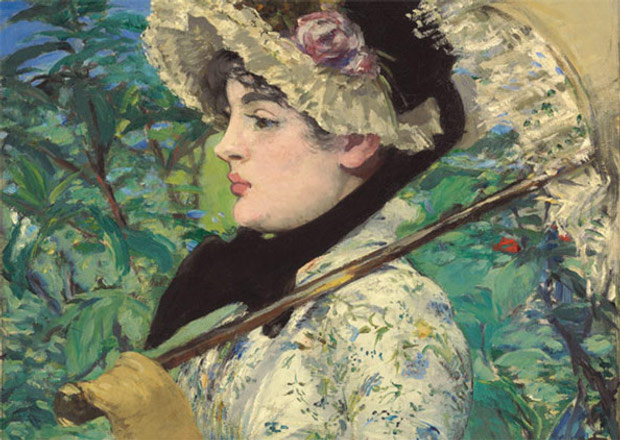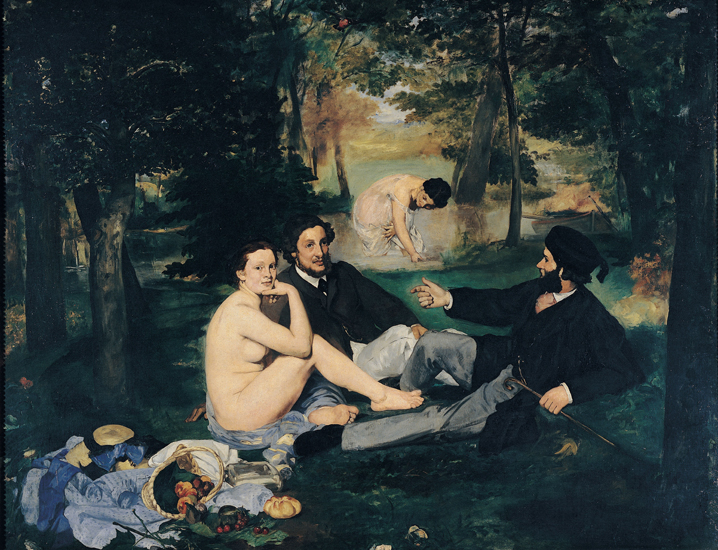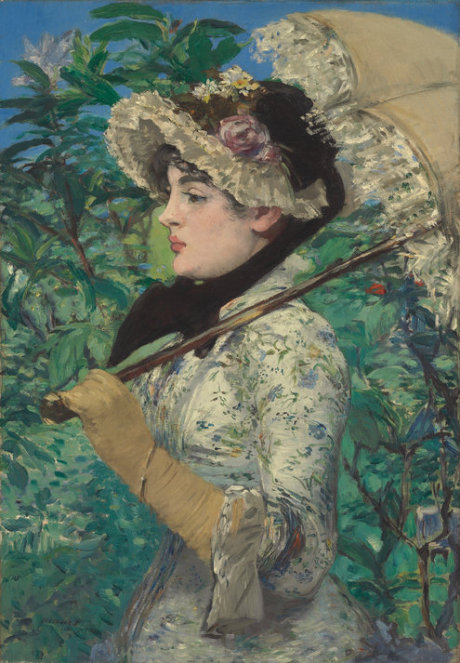
Gombrich Explains Manet
As the Getty buys Le Printemps for $65 million Gombrich explains why we still value this French master
Last night, Los Angeles’ J. Paul Getty Museum paid $65,125,000 or £41,028,750 for Édouard Manet’s 1881 painting Le Printemps or Spring, at Christie’s Impressionist and Modern Evening Sale in New York. The figure is a record for the French artist, and surely attests to a continued interest in this innovative period in art history.
So, why should the Getty, which already has four Manets in its collection, place such value on this picture? The canvas, painted in the final years of the artist's life and depicting the French actress Jeanne Demarsy in an allegorical role, wearing a floral dress and bonnet, is undoubtedly pretty. Yet the real value here lies in the way beauty is captured in a manner not seen previously.
As the great art historian EH Gombrich makes clear in his magisterial book, The Story of Art, Manet tore away outmoded artistic conventions, and tried to represent the world more faithfully.
As ever Gombrich grounds artistic developments within the greater historical movements of the day. In particular he examines how the changes wrought by the Industrial Revolution of the early nineteenth century altered painting. “Now the foundations on which art had rested throughout its existence,” he writes in The Story of Art, “were being undermined.”
French artists, in particular, equally enlivened by the social changes of the French Revolution, re-examined and changed the way painting captured the world. From this perspective, Manet’s work follows on from other French ‘revolutionaries'.
Indeed, Manet and his cohorts represented “the third wave of revolution in France (after the first wave of Delacroix and the second wave of Courbet)” Gombrich states.

Delacroix, Gombrich argues, broke from the tradition by valuing colour and imagination above draughtsmanship and knowledge, while Courbet favoured a sincerity and natural honesty over the pretty conventions of the day.
Manet, for his part tried to do away with the false conventions art students were taught, such as the practice of posing models in studios – where light fell through a window, rather than all around.
In so doing, Manet and his fellow painters realised that a scene wasn’t best represented by single objects, with clear lines and pigments. Such strict draughtsmanship did not do justice to the way it appeared before them. Instead, in their paintings, objects, figures and colours merged into a single image.
This might seem like a simple innovation today, but, as Gombrich notes, among all the preceding artists, “none of them had seriously challenged the conviction that each object in nature has its definite fixed form and colour which must be easily recognisable in a painting.”
Manet did question this, and by ignoring convention, rendered his pictures in bright colours and intermingling forms, to create a level of polychromatic verisimilitude unseen in up until then.
“It may be said that Manet and his follows brought about a revolution in the rendering of colours which is almost comparable to the revolution in representation of form brought about by the Greeks,” Gombrich states. “They discovered that, if we look at nature in the open, we do not see individual objects each with its own colour, but rather a bright medley of tints which bend in our eye or really in our mind.”

Look again at Le Printemps. Today, over 130 years since its paint dried, that "bright medley of tints" remains vibrant. What’s more, it was with paintings such as these that Manet and his acolytes would further muddy the fine lines of academic draughtsmanship. “Among the painters who joined Manet and helped to develop these ideas was a poor and dogged young man from Le Havre,” writes Gombrich, “Claude Monet.” But that’s another story.
For more on Manet, buy a copy of this great overview, and for more peerless insight into this artistic period and many others, buy a copy of Gombrich's The Story of Art here.